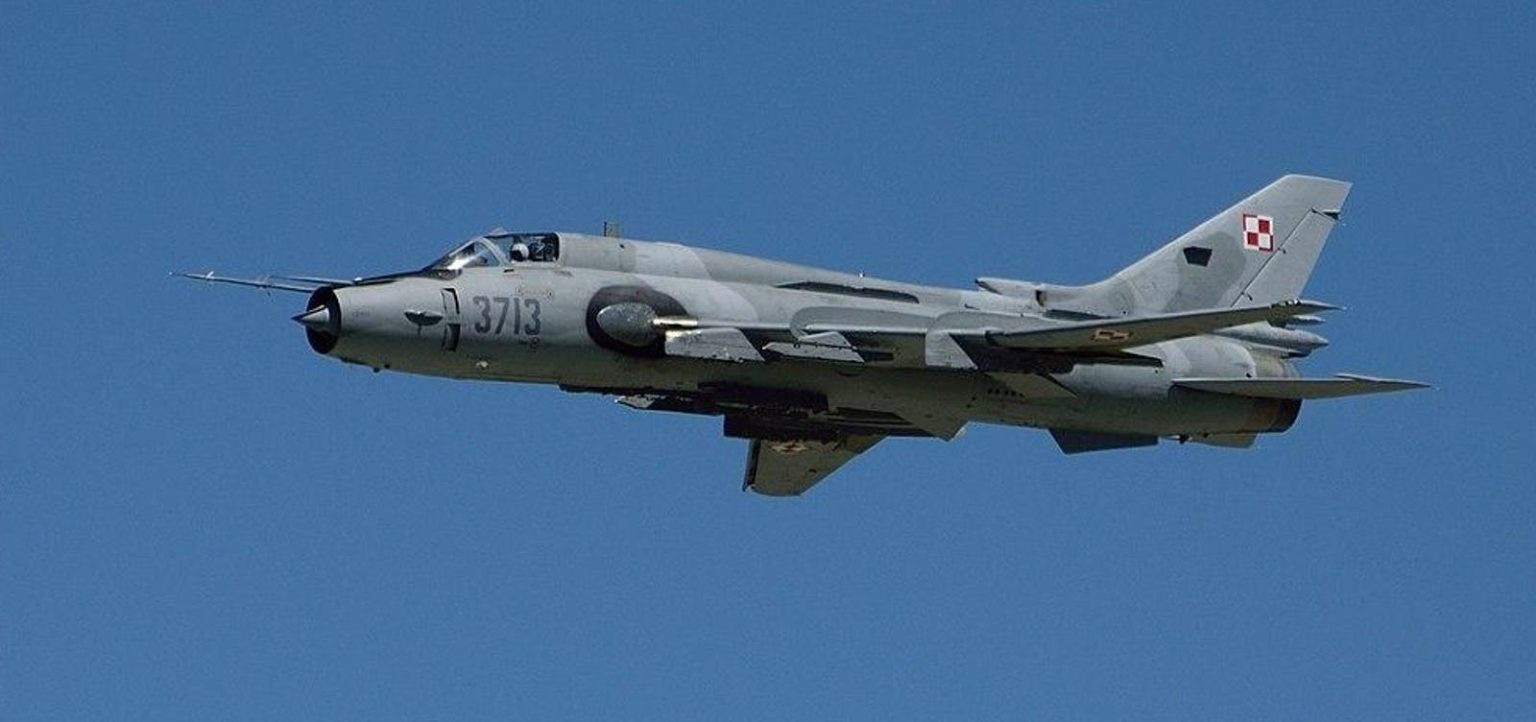No, there’s no reason to believe the Ukrainian air force is flying ex-Polish Sukhoi Su-22 bombers.
Sure, there’s a video circulating online depicting a swing-wing Su-22 flying low and fast over a landscape that looks like Ukraine. Yes, there’s a soldier in the video wearing a uniform that looks Ukrainian.
But the video might be old. And in any event, it doesn’t necessarily point to a Ukrainian acquisition of former Polish Su-22s.
The Su-22 is the export version of the Sukhoi Su-17, a 1960s-vintage attack jet with variable-geometry wings like those on the newer Sukhoi Su-24 bomber, which Ukraine does operate. Several eastern European countries bought Su-22s from the Soviet Union—or inherited them as the USSR collapsed in 1991.
That includes Ukraine, which was left with 50 Su-17s. But the 18-ton Sukhoi is hard to fly. “Not pilot-friendly,” is how one Polish Su-22 pilot described the type.
Starting in 2004, the Ukrainian air force sold off to Yemen and Vietnam, or put into storage, all but one of its Su-17s, ultimately leaving the air force with 125 newer Su-24 and Sukhoi Su-25 attack jets and Sukhoi Su-27 and Mikoyan MiG-29 fighters. The last airworthy Ukrainian Su-17, a test plane, last was seen in the air around 2018.
Poland hung onto its own Su-22s and even upgraded 18 of them—12 single-seat bombers and six two-seat trainers—with NATO-standard avionics, new radios and GPS receivers for accurate navigation. The plan, at present, is for the Polish air force finally to replace the aging Su-22s with new Lockheed Martin F-35 stealth fighters within the next couple of years.
But while Warsaw has been a strong supporter of a free Ukraine and hasn’t hesitated to supply its ally with surplus tanks, fighting vehicles and other weaponry, there has been no public discussion of ex-Polish Su-22s cascading to Ukraine.
It’s not even clear the Ukrainians would want the aging Sukhois. While the Ukrainian air force has lost in combat no fewer than 77 of its 125 pre-war fighters and attack jets, it has received from its allies 45 Su-25s and MiG-29s as replacements—and also has restored to flyable status scores of grounded jets that had been sitting in storage, some for a decade or more.
While sustaining its squadron strength, the Ukrainian air force has focused on adapting its existing jets to carry modern weapons it’s been getting from Kyiv’s European and American allies.
The Su-24s carry British Storm Shadow and French SCALP cruise missiles. The Su-25s fire American-made Zuni rockets. The MiG-29s now are compatible with GPS-guided JDAM glide-bombs and HARM anti-radar missiles from the United States; the Su-27s carry the same anti-radar missiles.
Adding a few weary Su-22s to the inventory would not significantly boost the Ukrainian air force’s combat power. “Su-22 aircraft are obsolete,” Gen. Jerzy Stefan Gotowała, the ex-commander of the Polish air force, said in 2016.
What would boost the Ukrainian air force’s combat power is a fighter type that’s more broadly compatible with modern Western munitions. Note that the Ukrainians currently fire the HARM missile in its least accurate modes.
Which is why the air force’s top priority, as Russia’s wider war on Ukraine grinds toward its third year, is inducting no fewer than 61 surplus Lockheed Martin F-16s from Dutch, Danish and Norwegian stocks. The F-16s unlock the potential of Ukraine’s new munitions in ways old Su-22s never could.
Read the full article here





